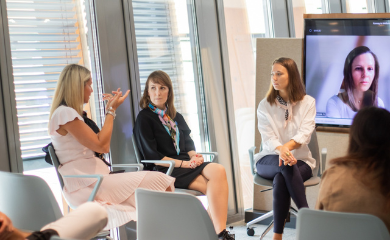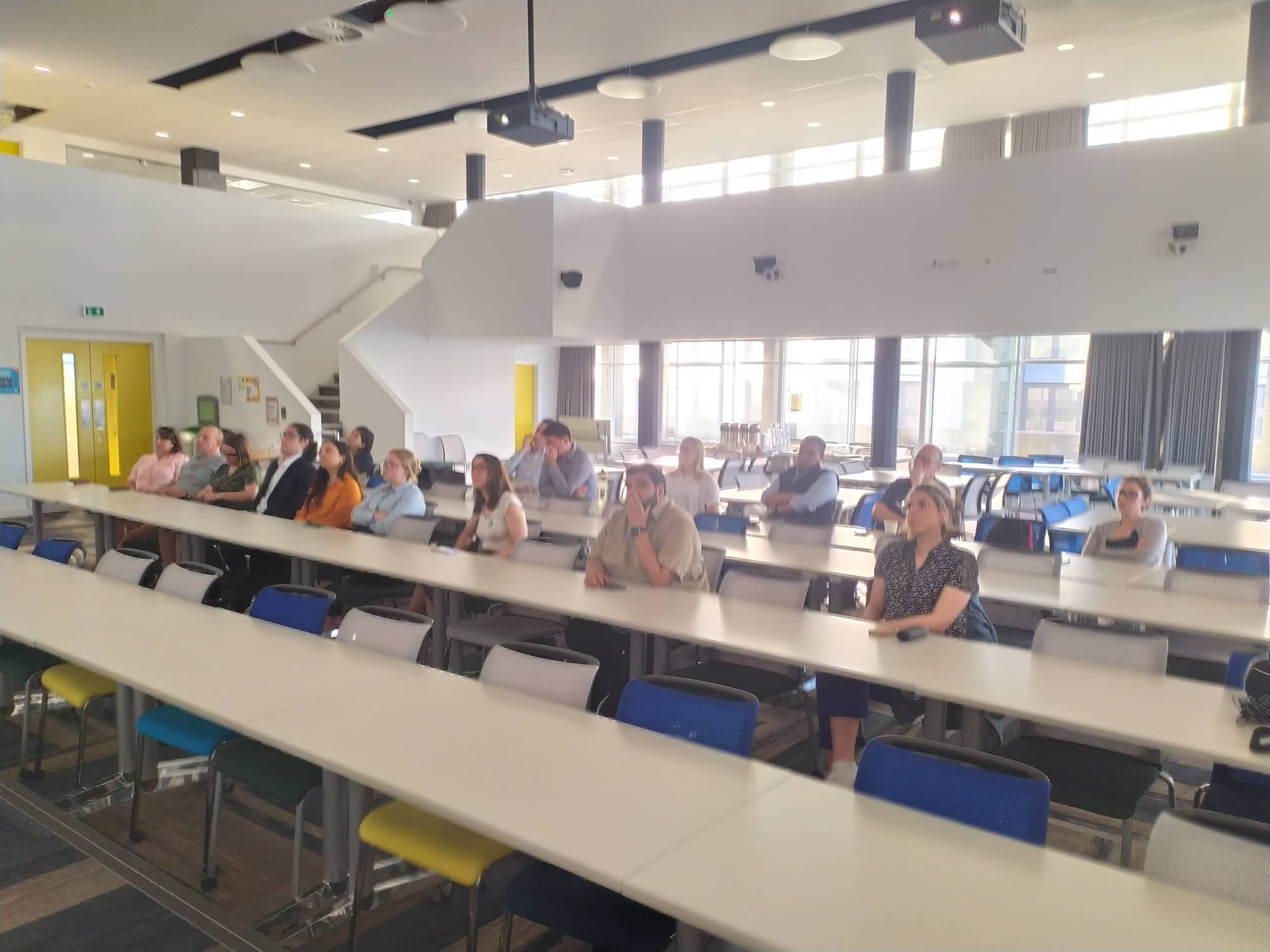In December 2021 I flew to my home country, Hungary, to celebrate Christmas with my family. I fell asleep on the plane almost instantaneously, I was completely exhausted. I had been working on my PhD for over three years, and at that point I was in the middle of writing up my thesis. Meanwhile, I was also developing my start-up social enterprise, and volunteering in the Global Shapers community. I worked whenever I could. I would wake up thinking about my thesis and go to sleep with business development practices in mind. To be able to do all this, I was trying to optimise and structure all my time, prioritising efficiency. Outside work I was exercising regularly, and meeting friends, catching up, socialising, sharing experiences. On the outside look it was all fine. I was meeting all the social expectations and expectations I set to myself, milestones towards the so-called success. However, the more I immersed myself in work and efficiency, the more I exhausted my energy levels. Everything became a question of productivity. I dedicated every second of my day to something purposeful. It was quite ironic: while I would be talking about mental health and work-life balance as a psychologist, I ended up working myself to the edge of burnout. So just before Christmas I was in bed, not really motivated to do anything at all. I was disillusioned about science, and felt little hope about the start-up world. Luckily enough, I did notice that things were not heading to the right direction. As the new year was approaching, the only thing I could really think about was that I needed to work on fewer projects and live a simpler and more relaxed life. However, the mere observation that I was working too much was not enough to turn things the right way. I had to make some hard decisions and take action. Not just talk about work-life balance but implement it in my very own life. So between January and March 2022 I set up boundaries in terms of commitment to work. I started saying no to new projects. I quit some of the projects I was involved in so that I was only really left with my key priorities. Lastly, I reminded myself that my worth as a human being did not equal the quality of my PhD thesis nor the growth of my start-up.

This story captures the essence of why workplace mental health must be an essential organisational value. It is easy to fall in the trap of chasing goals, milestones, success – and not even psychologists get it always right. We spend more or less 8 hours a day at work. Whatever that work looks like: whether it’s studies, whether it’s 9-5 office job, whether it’s self-employed projects. It means about 90 000 hours worked in our lifetime. Workplace mental health is not a nice-to-have, it’s not a shiny add-on. If we want to get to the end of those 90000 hours without exhausting our energy at the 25000th hour, workplace wellbeing is an absolute must. The question arises as to how we make a shift towards a workplace where wellbeing is a key of organisational culture. To what extent is it the individual worker’s responsibility and at what point does the employer become liable for ensuring mental health at work?
I like to take a framework approach to answer this question. Murdoch and his team investigated the role of context and complexity in designing and implementing interventions – in mental health and beyond. They distinguished between the macro, meso, and micro levels of context with elements that shape how an intervention may work. This framework can also help us understand the role that stakeholders play in creating mentally healthy workplaces, organisations where it’s good for us to be.
Macro level factors shape wellbeing at any given organisation. First, global and national policies outline the standards that organisations must follow in terms of workplace wellbeing. Wellbeing is addressed in the Sustainable Development Goals. Moreover, many countries created their national mental health– examples include Argentina, the United Kingdom, or Ethiopia. Next, mental health awareness in a community impact how much our colleagues, managers, and leaders know about thriving at work or tackling mental health problems. Besides, socio-economic determinants influence our general wellbeing and impact what services we might have access to. These include commuting time to work, financial stability, housing conditions, and the availability and affordability of public health services. I see these macro-level contextual elements as ones that set the scene for wellbeing in organisations and for individuals working in them. These factors can typically be changed on a systemic level, and often go beyond the capacity of one given workplace or individual.
It is on the meso level of context where I believe an organisation must take responsibility and act. This level consists of institutions, and networks that exist in a community, just like for-profit companies, non-governmental organisations, or even universities. On the one hand, a workplace should ensure that no employee suffers harm to their wellbeing while being part of the organisation. On the other hand, when new structures are introduced in an organisation to promote growth and productivity, they should also be promoting mental health. We can test how an organisation is addressing mental health by asking a couple of questions. Is company leadership setting profit-making as the key goal for the organisation? Are employees considered to be easily replaceable? Is their career progress taken as important, or can they be stuck in a certain position? Are managers trained in using active listening skills? Is it encouraged within the organisation to ask for feedback, and are employees supported in receiving and implementing constructive feedback? Would colleagues be sending out emails long after working hours? Is there an untold expectation for employees to answer straight on?

My key recommendation for organisations is to have preventive and intervention practices in place. Prevention means creating an organisational culture that is flexible and dynamic enough that it can address the ups and downs people may experience. Preventive measures can go much beyond traditional mental health services. They can mean restructuring the interior design of the workplace to promote physical and mental health. They can mean adopting flexible and remote work policies, extending sabbatical for employees, or experimenting with a four-day working week. Other examples include training managers on mental health first aid, and creating vulnerability circles. Next, intervention support should be in place to be able to help when an issue has occurred: when we have a distressed colleague, someone burnt out, or in need of immediate mental health support. Access to psychologists using evidence-based methods, and a strong referral scheme to specialist services are keys to relevant and effective intervention.
Lastly, on the micro level of context we can address what the individual can be responsible for in terms of mental health. Here are some of the good practices that we as individuals, colleagues, employees can do: developing a daily routine, setting work-life balance boundaries, setting self-reflection hours in our calendar. Finding work-life balance is also about rejecting the culture of ‘business’. Observing people who can not dive deep in their work because they constantly get disrupted by the next project and social media notifications is alarming. It’s a tricky balance: it is important to eat healthy, exercise often, and have a regular sleeping pattern. However, flexibility is crucial as well: getting too focused on optimising our life can increase our stress levels. It’s good to remember that it’s okay to stop and redesign what life looks like. Adaptability, resilience, balance, and moderation are key terms. Remember, it’s not about using up all the energy and then burning out at the 19 876th working hour. The goal is to arrive in good mental health to the 90 000th and last one.
Author

